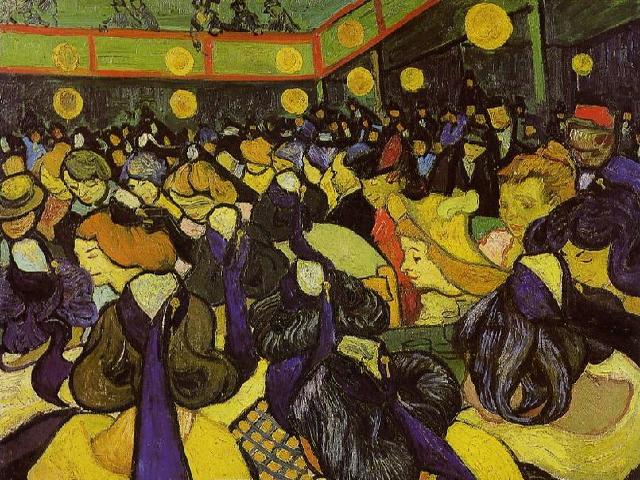Orsay
Don't miss anything
The Dance Hall in Arles
On 23 October 1888, Paul Gauguin met up again with Vincent Van Gogh in Arles. The two men dreamt of founding a "studio of the Midi" together, in the South of France. But their enthusiasm rapidly waned. Van Gogh's overbearing presence came up against Gauguin's fierce independence. However, towards mid-December, they started working together again during a temporary improvement in their relationship.
The two great works created during these few days of renewed collaboration are The Arlésiennes (Mistral) (Chicago, The Art Institute), by Gauguin, and The Dance Hall in Arles by Van Gogh. This painting seems to show an evening at the Folies-Arlésiennes, a dance hall on Boulevard des Lices. Gauguin's influence is clear as Van Gogh scrupulously applies the principles of synthesism and cloisonnism developed by his friend at Pont-Aven. The reference to Japanese art is also evident, with the unusual elevation of the horizon, and in the strange, decorative foreground where the curves and counter curves of the hair are dominant.
The multitude of characters, the variety of their style of clothes and the way they overlap, skilfully portray a feeling of crowdedness and saturation. The portrait of Madame Roulin on the right, who alone turns to look at the spectator, seems to express a claustrophobic terror. In Gauguin's Arlésiennes, two female characters also express anxiety and anguish.
To escape this latent anxiety, the two men went to Montpellier on 16th or 17th December to visit the Musée Fabre. The arguments that followed highlighted their aesthetic disagreements more than ever. As a result of this day out, their separation became inevitable, and Gauguin prepared to leave.




